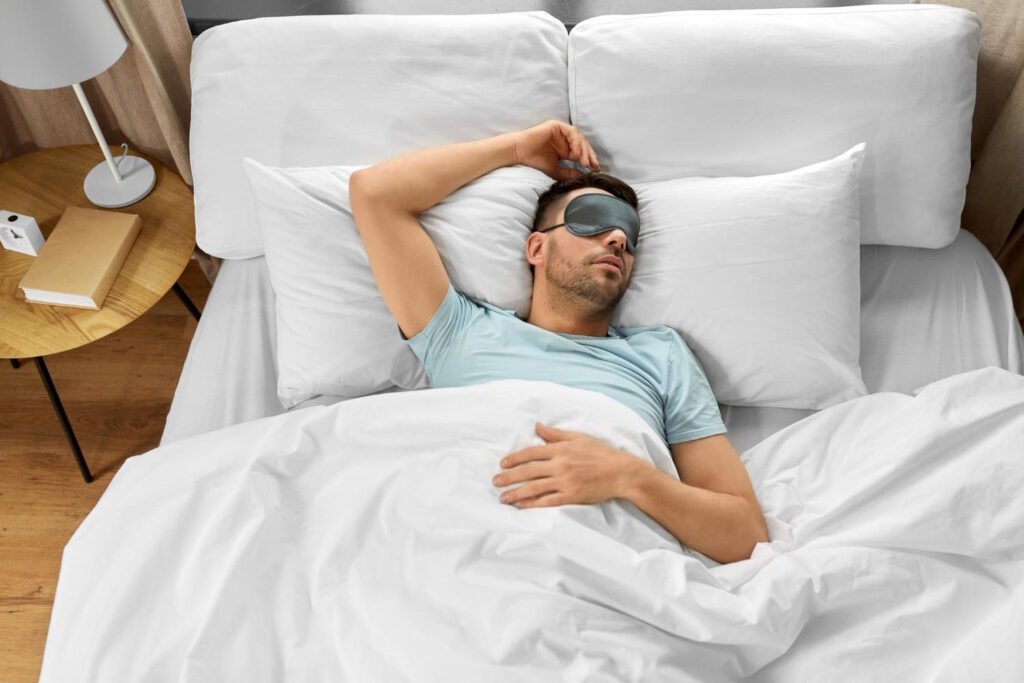Sleep isn’t just about closing your eyes; it’s the key to physical health, mental clarity, and emotional resilience. Yet many struggle with truly restorative rest due to an unoptimized sleep environment. This guide shows you how to craft your ideal sleep sanctuary, from choosing the right mattress to perfecting your bedroom for better sleep.
Understanding Your Sleep Needs
Before investing in new bedding or rearranging your bedroom, take time to assess your current sleep patterns and preferences. Your body has specific requirements that influence what will work best for your comfort zone.
Sleep Position Matters
Your preferred sleep position significantly impacts mattress and pillow selection. Side sleepers need softer surfaces that contour to their body’s curves, particularly around the hips and shoulders. Back sleepers benefit from medium-firm support that maintains spinal alignment without creating pressure points. Stomach sleepers require firmer surfaces to prevent their midsection from sinking too deeply.
Pay attention to how you naturally position yourself during sleep. If you wake up in a different position than when you went to bed, consider yourself a combination sleeper who needs versatile support options.
Temperature Preferences
Some people naturally run hot during sleep, while others tend to feel cold. Hot sleepers should look for breathable materials and cooling technologies in their mattress and bedding choices. Cold sleepers might prefer memory foam or down materials that provide warmth and insulation.
Your body temperature naturally drops as you prepare for sleep, so creating an environment that supports this process improves sleep quality significantly.
Health Considerations
Chronic pain, allergies, and other health conditions influence your comfort requirements. Those with back pain often need specific support zones, while allergy sufferers should prioritize hypoallergenic materials. Sleep apnea patients might benefit from adjustable bed frames that elevate the head slightly.
Don’t ignore physical discomfort during sleep. These issues often have solutions through proper equipment selection and environmental adjustments.
Choosing the Right Mattress
Your mattress serves as the foundation of sleep comfort. With numerous options available, finding the right match requires understanding different materials, firmness levels, and construction types.
Mattress Types and Materials
Memory foam mattresses contour closely to your body, providing excellent pressure relief. They work particularly well for side sleepers and those with joint pain. However, some models retain heat, so look for gel-infused or open-cell foam if temperature regulation is important.
Innerspring mattresses offer traditional bounce and strong edge support. They tend to sleep cooler than foam but may not provide adequate pressure relief for all sleep positions. Hybrid mattresses combine foam comfort layers with innerspring support cores, offering the benefits of both materials.
Latex mattresses provide responsive support with natural cooling properties. They’re durable and naturally antimicrobial, but can be expensive. For those seeking premium comfort with advanced cooling technology, consulting a DreamCloud mattress dealer in Salt Lake City can provide insights into luxury hybrid options that combine multiple materials for optimal comfort.
Firmness Levels
Mattress firmness is subjective, but general guidelines help narrow your choices. Soft mattresses (3-4 on a 10-point scale) work well for lightweight side sleepers. Medium mattresses (5-6) accommodate most sleep positions and body types. Firm mattresses (7-8) support heavier individuals and stomach sleepers effectively.
Remember that firmness preferences can change over time due to age, weight changes, or health conditions. Some mattresses offer dual firmness zones for couples with different preferences.
Size Considerations
Don’t underestimate the importance of proper mattress size. Couples should consider king or California king sizes to minimize sleep disruption from partner movement. Single sleepers who move frequently during sleep might benefit from a queen-size bed for extra space.
Factor in your bedroom dimensions and other furniture when selecting the size. A mattress that overwhelms your room can negatively impact the overall sleep environment.
Selecting the Perfect Pillow
Pillows play a crucial role in maintaining proper spinal alignment and neck support. Like mattresses, pillow selection depends on sleep position, personal preferences, and any specific health needs.
Pillow Types
Down pillows offer luxurious softness and moldability but may not provide adequate support for some sleepers. Down alternative fills provide similar comfort with hypoallergenic properties and easier maintenance.
Memory foam pillows maintain their shape while contouring to your neck and head. They’re excellent for consistent support but may retain heat. Latex pillows provide responsive support with natural cooling and antimicrobial properties.
Support Levels
Side sleepers typically need higher, firmer pillows to fill the space between their neck and shoulder. Back sleepers benefit from medium-height pillows that support the natural curve of their neck. Stomach sleepers should use thin, soft pillows to avoid straining their neck.
Some people require multiple pillows for optimal comfort—one for head support and additional pillows for body positioning or knee support.
Special Features
Cooling pillows incorporate gel, breathable covers, or phase-change materials to regulate temperature. Adjustable pillows allow you to add or remove fill to customize height and firmness. Cervical pillows feature specialized shapes designed to support neck alignment.
Consider your specific comfort issues when evaluating special features. These enhancements can make significant differences for targeted sleep problems.
Bedding Materials and Comfort
Quality sheets, blankets, and mattress protectors complete your sleep comfort zone. The right materials enhance temperature regulation, moisture management, and overall tactile comfort.
Sheet Materials
Cotton remains the most popular choice due to its breathability and durability. Percale cotton offers crisp, cool comfort ideal for hot sleepers. Sateen cotton provides silky smoothness with a subtle sheen but retains more heat.
Bamboo sheets offer exceptional moisture-wicking properties and natural antimicrobial benefits. They’re soft, breathable, and environmentally sustainable. Linen sheets provide maximum breathability and a relaxed, casual feel that improves with washing.
Microfiber sheets are budget-friendly and wrinkle-resistant, but may not breathe as well as natural materials.
Thread Count Considerations
Higher thread count doesn’t always mean better quality. For percale cotton, 200-400 thread count provides optimal breathability and durability. Sateen weaves can handle higher thread counts while maintaining softness.
Focus on material quality and weave construction rather than thread count numbers alone. Well-made lower thread count sheets often outperform poorly constructed high thread count alternatives.
Blankets and Comforters
Down comforters provide excellent insulation with minimal weight. They’re perfect for cold sleepers but may be too warm for hot sleepers. Down alternative comforters offer similar loft with hypoallergenic properties and easier care.
Weighted blankets can improve sleep quality for some people by providing deep pressure stimulation. They’re particularly helpful for anxiety or restless sleep but aren’t suitable for everyone.
Consider having multiple blanket options for seasonal changes and varying temperature preferences.
Creating a Relaxing Sleep Environment
Your bedroom environment significantly impacts sleep quality. Small adjustments to lighting, temperature, noise, and organization can create a more restful space.
Lighting Control
Darkness signals your body to produce melatonin, the natural sleep hormone. Blackout curtains or shades eliminate external light sources effectively. For rooms with significant light pollution, consider sleep masks as additional protection.
Avoid blue light from electronic devices at least one hour before bedtime. Blue light suppresses melatonin production and can delay sleep onset. Use dim, warm lighting for evening activities.
Temperature Management
The optimal sleep temperature for most people falls between 60-67°F (15-19°C). Your bedroom should feel slightly cool when you’re ready for sleep. Use fans, air conditioning, or heating systems to maintain consistent temperatures.
Breathable bedding materials and moisture-wicking sleepwear help regulate your personal microclimate under the covers.
Noise Reduction
Consistent, gentle background noise often improves sleep quality compared to complete silence. White noise machines, fans, or nature sound apps can mask disruptive environmental noise.
For very noisy environments, consider earplugs designed for sleep comfort. They should fit properly without causing ear pressure or discomfort.
Room Organization
A clutter-free bedroom promotes mental relaxation. Keep work materials, exercise equipment, and electronic devices out of the bedroom when possible. Your brain should associate the space primarily with sleep and relaxation.
Ensure adequate ventilation for fresh air circulation. Stuffy rooms can negatively impact sleep quality and morning alertness.
Frequently Asked Questions
How often should I replace my mattress?
Most mattresses need replacement every 7-10 years, depending on quality and use. Signs it’s time for a new mattress include visible sagging, increased aches and pains, or consistently poor sleep quality that wasn’t present when the mattress was newer.
Can my pillow affect my sleep quality?
Absolutely. An inappropriate pillow can cause neck pain, headaches, and poor spinal alignment that disrupts sleep. The right pillow maintains neutral spine positioning and reduces pressure points, leading to more comfortable and restorative sleep.
What’s the best room temperature for sleep?
Research suggests 60-67°F (15-19°C) as optimal for most people. However, individual preferences vary. The key is maintaining a consistent, slightly cool temperature that doesn’t cause you to wake up from being too hot or too cold.
How do I know if my mattress is too soft or too firm?
A mattress is too soft if you sink in significantly or experience back pain from a lack of support. It’s too firm if you feel pressure points, especially on your hips and shoulders, or if you toss and turn frequently trying to get comfortable.
Conclusion
Building the perfect sleep environment is an investment in your health and well-being. Quality sleep boosts immunity, emotional balance, and cognitive performance. By prioritizing comfort, you’re prioritizing your best self. Evaluate your setup honestly and make gradual changes. Your body will reward you with deeper, restorative sleep, leaving you energized and ready for the day ahead.



